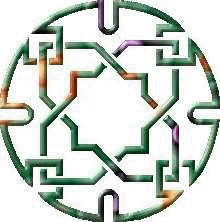


The Culture–Power Syndrome within a
Transcivilizational Ecumene
Armando Salvatore
ORIENTAL STUDIES UNIVERSITY, NAPLES/HUMBOLDT UNIVERSITY, BERLIN

world, if not upgraded and metamorphosed along a socially evolutionary line.
In Weber’s analysis of the Protestant and ‘occidental’ case, the civilizationally
specific, value-oriented, purposive rationality of the religious tradition morphs
into the self-propelling engine of a strategic rationality clothed in the reaffirmation
of value and nested in the ethic of modern professions and in the routinized charisma of bureaucracy. The institutionalization of the academic study of Islam in the guise of ‘Islamic Studies’ across Europe was integral to this development (Stauth, 1993). Yet the typologization of Islam as the cultural matrix of a distinctive civilization also played a role in the work of social theorists who were not specialists of Islamic Studies. In spite of the insistent reappearance of such an essentialist theorizing, leading historians of Islamic civilization and in particular of the modern Muslim empires, have observed recurrent patterns of differentiation of state power and religious authority. Civilizational analysts are playing an important role in providing theoretical depth to such fairer parameters of comparison (Arnason, 2001: 399).
Two strategies are particularly suitable to this end. A major approach reframes
the issue of modernity in terms of partly competing and partly overlapping patterns of modernity, or ‘multiple modernities’ (Eisenstadt, 2000). A parallel path stresses the opportunity to theorize about the dynamic dimension of tradition before analyzing consolidated patterns of modernity (see Salvatore, 2007).
Both strategies can provide theoretical underpinnings to Hodgson’s view of Islam
as a uniquely transcivilizational ecumene originally blending key components of
‘Occident’ and ‘Orient’ more than as a compact civilization like Western Europe,
India or China. While the expansion of Islam across the Afro-Eurasian landmass
enhanced the global interconnectedness of civilizational realms within the whole
hemisphere, it also contributed to a process of re-entrenchment of subregions; i.e. the perception of a ‘Muslim peril’ incarnate in the expansive universalism of Islam was to aid the formation of a Western European and of an Indian identity.
In the former case, the Western essentialization of Islam appears less as an Orientalist
ruse of power than as the long-term outcome of the limits met by Islam’s
transcivilizational expansiveness through the encounter with the singular civilizational
machine incarnate in the modern West.
Traditions, with their dynamism, inner contestability and mutual interaction, overlapping and sometimes merging, represent the cultural dimension of civilizations.
In the context of his study of Islamdom, Hodgson developed a criticism of the trivialized notion of tradition that was common within modernization theory circles. Against one-sided views of modernization he stressed creative action and cumulative interaction as essential traits of traditions. Arnason has interpreted Hodgson’s idea of tradition in ways that clarify the relation between the micro and the macro dimensions of a civilization, reflecting the mutual interaction between a tradition relying on common practice and diffuse communication and its structural underpinnings (Arnason, 2006). The sociologists’ Holy Grail, i.e. the search for the ‘micro-macro link’ ensuring both social dynamism and cohesion, appears to gain some contours with regard to the way traditions warrant the vitality and stability of civilizations beneath the level of institutional politics,
1 0 2
European Journal of Social Theory 13(1)